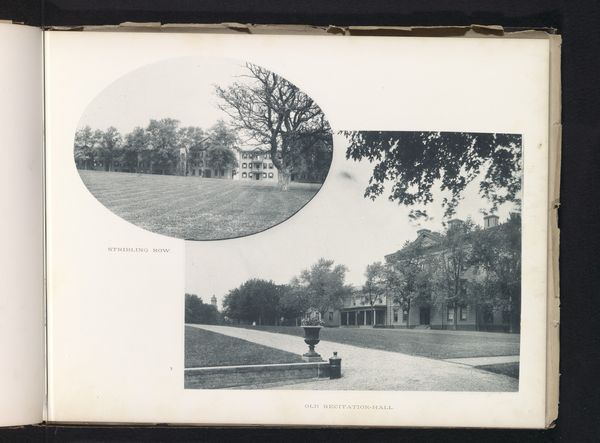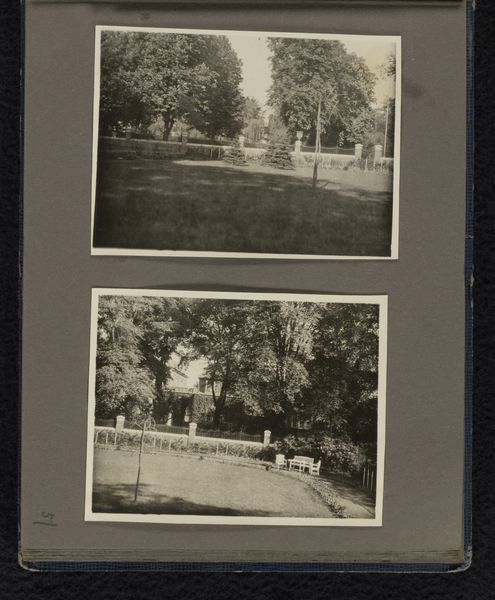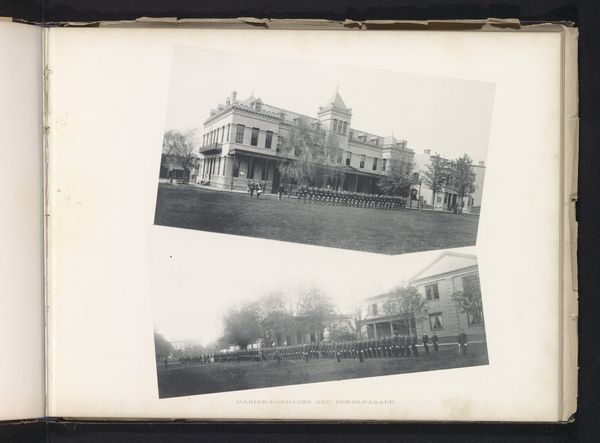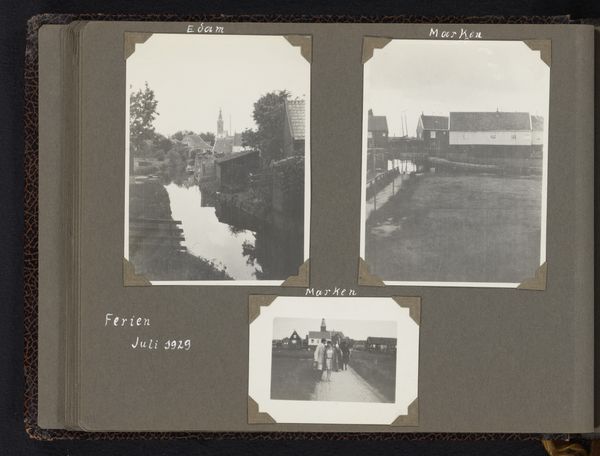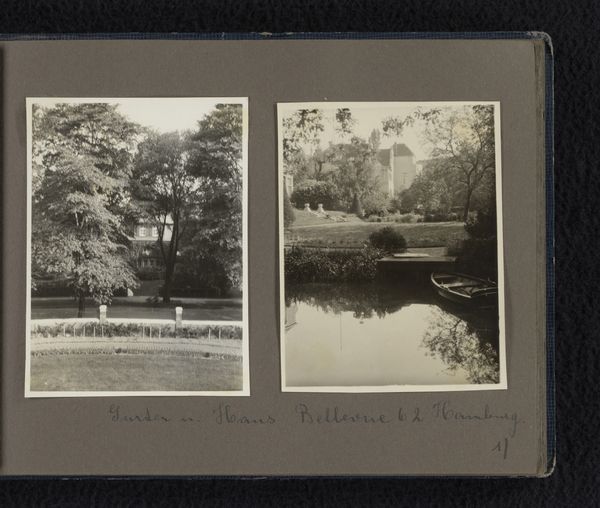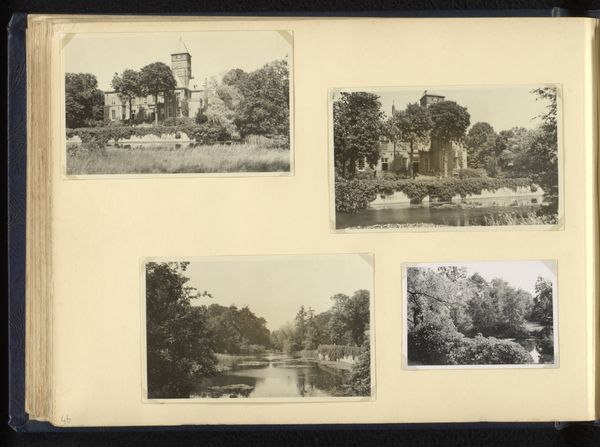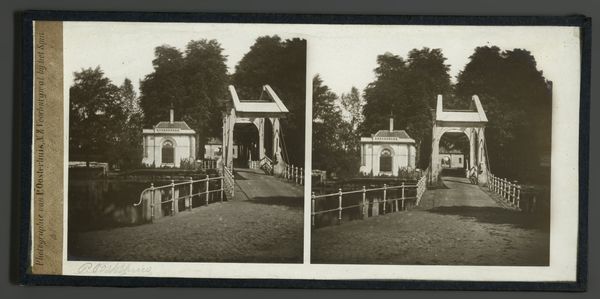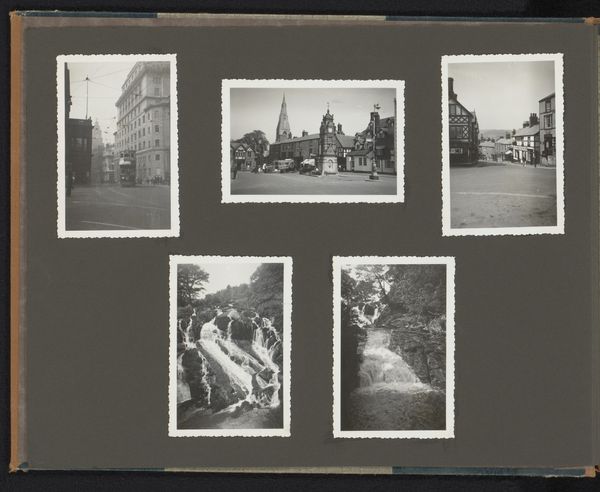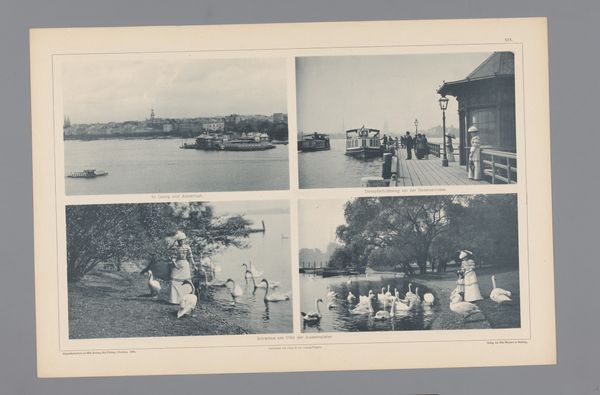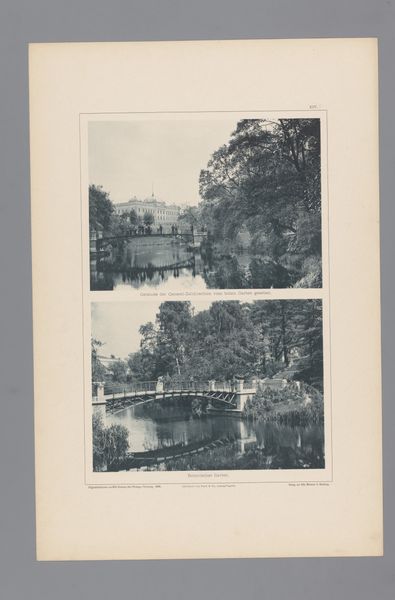
Dimensions: height 326 mm, width 492 mm
Copyright: Rijks Museum: Open Domain
Curator: This gelatin-silver print from 1894, titled "Vier gezichten op de dierentuin van Hamburg," by Wilhelm Dreesen offers us four distinct glimpses into the Hamburg Zoo. Editor: It's somber, isn't it? The monochromatic palette evokes a sense of distance, almost like peering into a world slightly removed. It's interesting, almost an intimate photo album. Curator: Exactly. The image's composition, dividing the zoo into separate vignettes, compels us to consider how such institutions categorized and displayed both animals and the humans who visited them. The zoo was an arena where class, race, and power were visibly performed. Consider how, for example, different levels of society can experience the same public space but relate to it through entirely different perspectives shaped by identity. Editor: I see what you mean. There is such tension between a zoo as entertainment, a zoo as social space and as a type of prison where the animals were removed from their own habitat by force. I also notice Dreesen’s choice of photographic style; you could place it between Pictorialism and Impressionism, the focus soft, giving it an almost dreamlike, and indeed a fictional character. These pictures don’t quite align with straightforward photography. Curator: And those stylistic choices amplify the work's commentary. Pictorialism’s artistic aims and Impressionism’s capture of fleeting moments add a layer of artifice, questioning the "naturalness" of what is being presented. This zoo scene is being actively created, manipulated, for specific effects, and thus it makes a critical argument. Editor: Right, we're seeing a highly constructed environment and performance rather than an honest depiction of nature or animal behavior. Also it calls us to contemplate zoos and social interactions and cultural values during the rise of modernity and colonization. Dreesen presents that colonial context for discussion. Curator: In short, it makes visible the ideological frameworks that are structuring our engagement with nature. We may have come seeking amusement, but we're confronted, here, with the underpinnings of power. Editor: I initially saw a dated photograph, but now I'm more conscious of these gazes; they make the social structures that shape public space more noticeable.
Comments
No comments
Be the first to comment and join the conversation on the ultimate creative platform.
